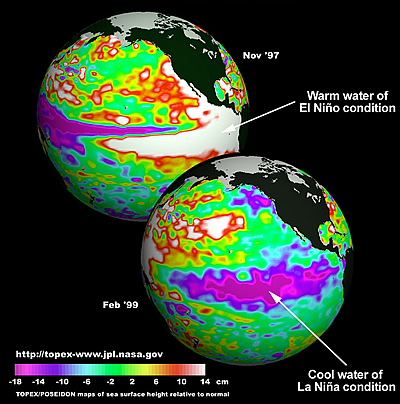The red and white color of the eastern tropical Pacific in the upper image (from Nov. 1997) indicates higher than normal ocean level due to piling up of warm ocean water during El Nino. The lower image (Feb 1999) shows ocean level during La Nina when there is cool water from upwelling in the eastern tropical Pacific. These maps use data from TOPEX/POSEIDON and Jason 1 to show the height of the ocean surface.
Click on image for full size
Courtesy of NASA/JPL
The El Niño-Southern Oscillation (ENSO)
Floods and mudslides in Ecuador, droughts and wildfires in Australia, and California rainstorms – could all these events be related? Yes, they can. They are all affected by changes in the ocean and atmosphere every few years during El Niño and La Niña events. These are parts of the El Niño-Southern Oscillation (ENSO).
During El Niño events, winds that usually blow west across the tropical Pacific Ocean get weaker. Without the wind, seawater at the ocean surface isn’t pushed west towards Australia. This causes the warm water of the western Pacific to spread east towards South America. Less fish can live in the warm water because it doesn’t have many nutrients in it.
During La Niña events, the winds grow stronger across the Pacific. This causes the surface ocean water to move west. Cold and deep water comes to the surface in the eastern Pacific, a process called upwelling. Lots of fish live in the cold water because it has lots of nutrients.
El Niño and La Niña events can affect weather all over the world. Intense rainstorms and flooding, extreme droughts, the Atlantic hurricane season, and the number of winter storms in many places are affected by these events. These impacts are called teleconnections.
You might also be interested in:

Wind is moving air. Warm air rises, and cool air comes in to take its place. This movement creates the winds around the globe. Winds move at different speeds and have different names based on their speed.
...more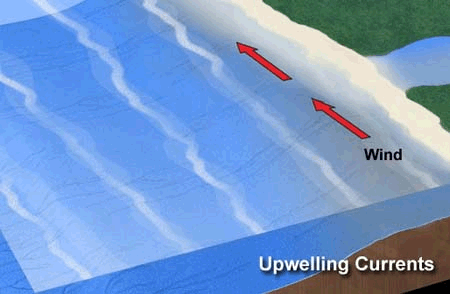
There are places in the ocean where water from the deep sea travels up to the surface. These are called areas of upwelling. The deep waters can have a large influence on marine life and the climate too.
...more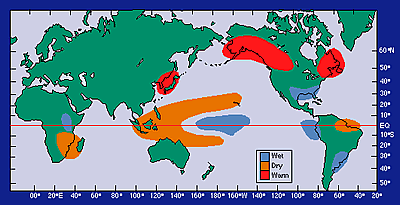
Changes in the atmosphere in one place can affect the weather very far away. Scientists call this phenomenon teleconnections. Sometimes the way air moves around the atmosphere changes over time. The changes
...more
Do you like anchovies on your pizza? Many anchovies come from the Southeast Pacific Ocean near Chile and Peru. In fact, there are lots of different types of fish in this part of the world. Why are there
...more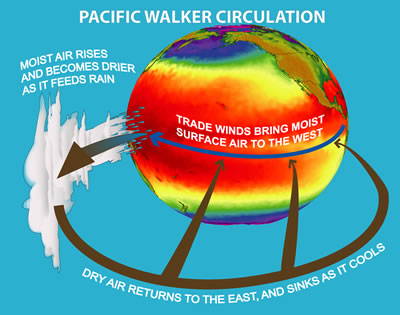
The Walker circulation is an ocean-based system of air circulation. This system influences weather on the Earth. Normally, the warm, wet western Pacific Ocean is under a low pressure system, and the cool
...more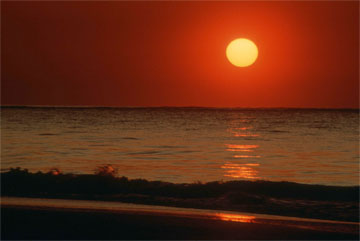
Scientists have discovered that changes that happen on the Sun have an impact on weather here on Earth. When the sun shines a lot in areas over the Pacific Ocean that do not have a lot of clouds, it heats
...more
Sometimes the way the air moves around in the atmosphere changes.The way water moves through the ocean can change too. These changes can cause unusual weather for a few weeks or a few months or a year
...more


